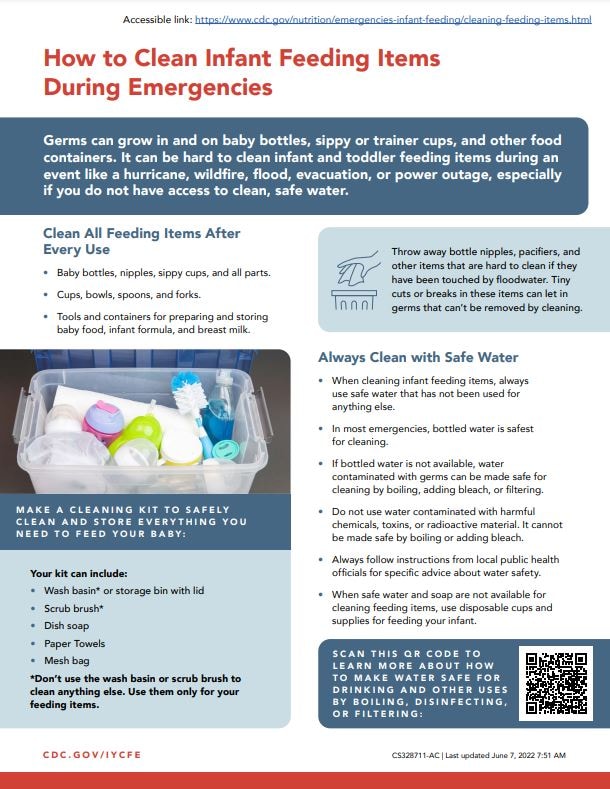How to Clean Infant Feeding Items During Emergencies
Germs can grow in and on baby bottles, sippy or trainer cups, and other food containers. It can be hard to clean infant and toddler feeding items during an event like a hurricane, wildfire, flood, evacuation, or power outage, especially if you do not have access to clean, safe water.
Clean All Feeding Items After Every Use
- Baby bottles, nipples, sippy cups, and all parts.
- Cups, bowls, spoons, and forks.
- Tools and containers for preparing and storing baby food, infant formula, and breast milk.
Always Clean with Safe Water
- When cleaning infant feeding items, always use safe water that has not been used for anything else.
- In most emergencies, bottled water is safest for cleaning.
- If bottled water is not available, water contaminated with germs can be made safe for cleaning by boiling, adding bleach, or filtering.
- Do not use water contaminated with harmful chemicals, toxins, or radioactive material. It cannot be made safe by boiling or adding bleach.
- Always follow instructions from local public health officials for specific advice about water safety.
- When safe water and soap are not available for cleaning feeding items, use disposable cups and supplies for feeding your infant.
Throw away bottle nipples, pacifiers, and other items that are hard to clean if they have been touched by floodwater. Tiny cuts or breaks in these items can let in germs that can’t be removed by cleaning.
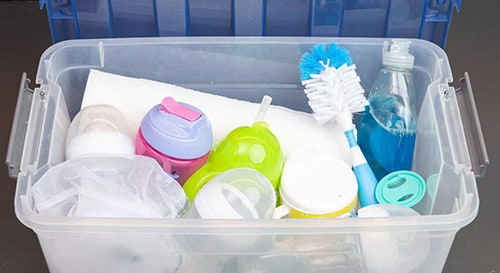
Your kit can include:
- Wash basin* or storage bin with lid
- Scrub brush*
- Dish soap
- Paper Towels
- Mesh bag
*Don’t use the wash basin or scrub brush to clean anything else. Use them only for your feeding items.
Learn more about how to make water safe for drinking and other uses by boiling, disinfecting, or filtering.
Follow These Steps to Protect Your Baby
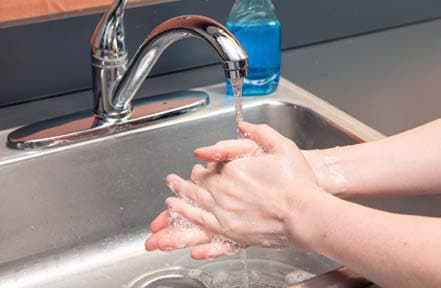
1. Wash your hands with soap and water or use hand sanitizer with at least 60% alcohol.
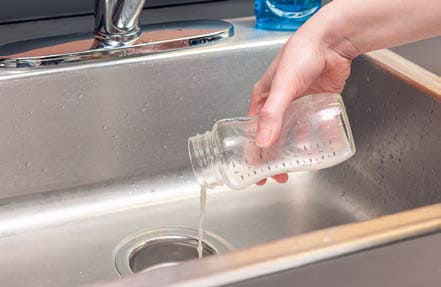
2. Discard leftover liquids or foods from bottles, cups, and containers.
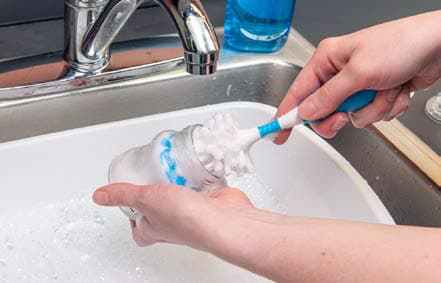
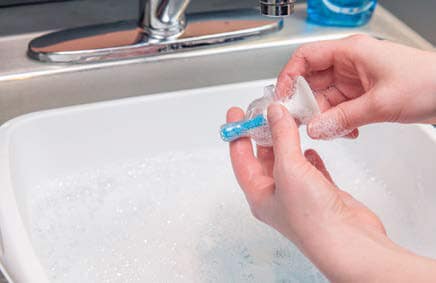
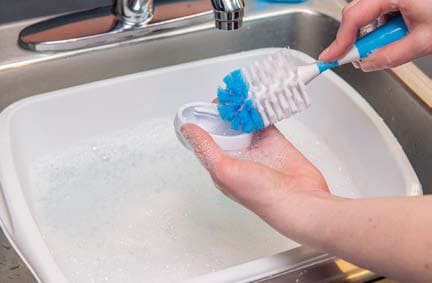
3. Scrub and wash items.
- Take apart all items and put them into your wash basin. NEVER put items directly in a sink. Germs in the sink can make your baby sick.
- Fill wash basin with safe water and add dish soap.
- Use a scrub brush to clean all surfaces.
- Pour or squeeze soapy water through bottle nipples, straws, valves, and sippy cup spouts.
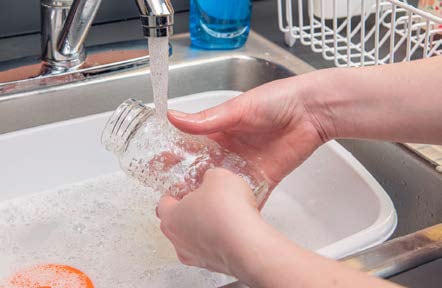
4. Rinse with safe water.
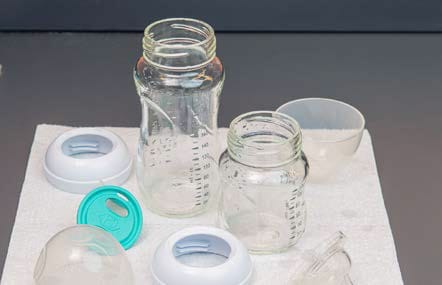
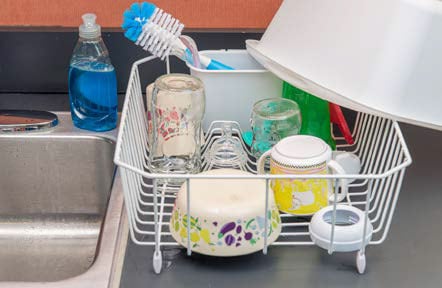
5. Air dry on an unused paper towel or clean drying rack, or hang to dry in a clean mesh bag.
- If air drying is not an option, dry with a clean paper towel. Do NOT dry with a dish towel. Germs on dish towels can make your baby sick.
- If you use a drying rack, put all items upside down to drain out the water.
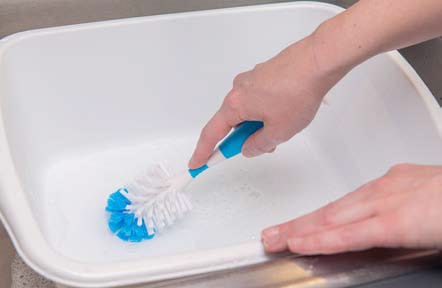
6. Clean the wash basin, scrub brush, and drying rack with soap and safe water. Rinse and air dry.
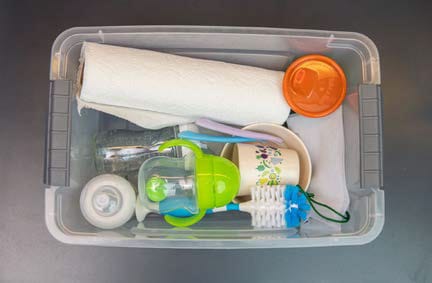
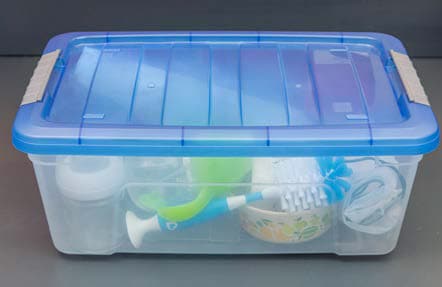
7. Store completely dry items in a clean place, such as inside your wash basin or storage bin.
Do not clean infant feeding items near diapering areas!
Sanitize Items as Needed
If your baby is less than 2 months old or if your baby is sick, you will need to do one more step after washing and rinsing your feeding items. Sanitize all items at least once every day for extra protection.
Use one of these methods to sanitize your feeding items:
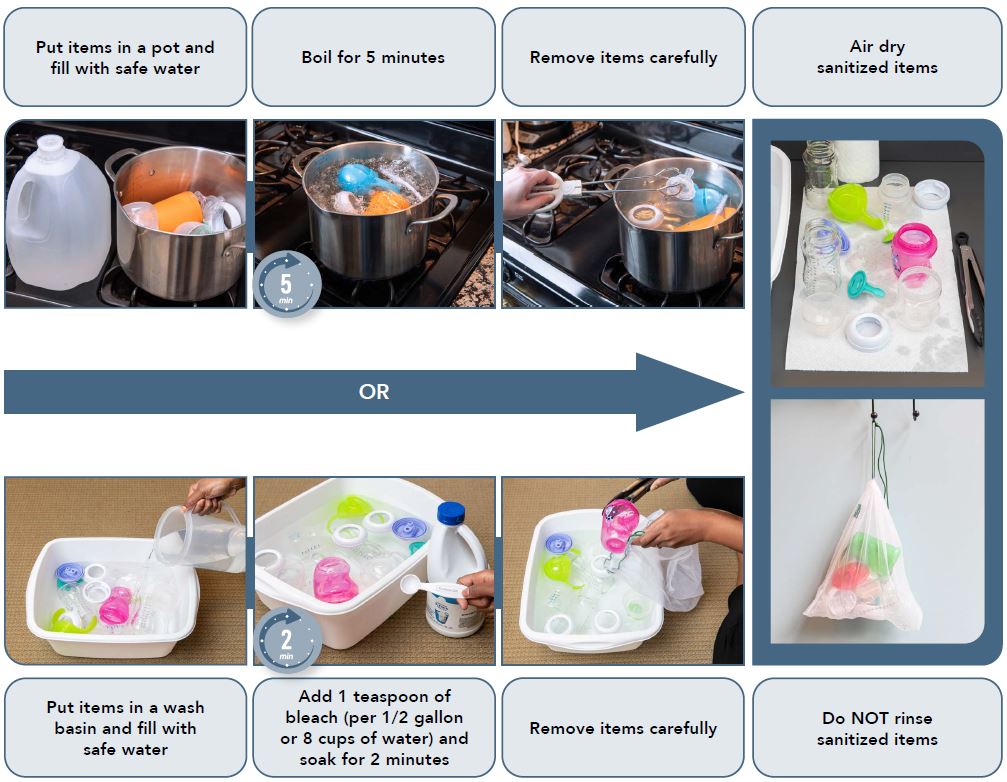
Note: Any bleach that remains after sanitizing will break down quickly as it dries and will not hurt your baby.
